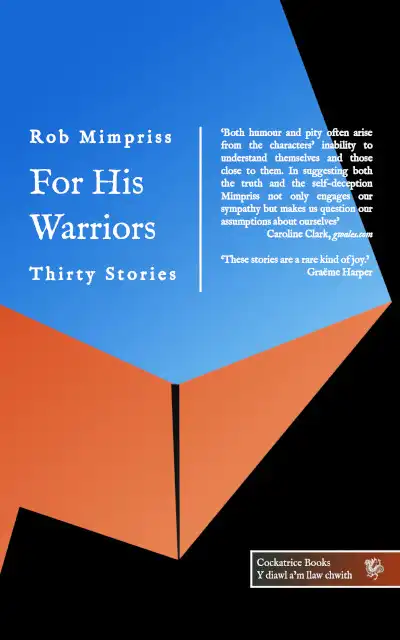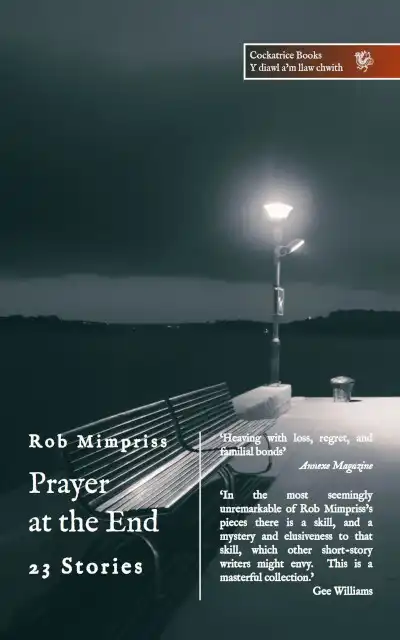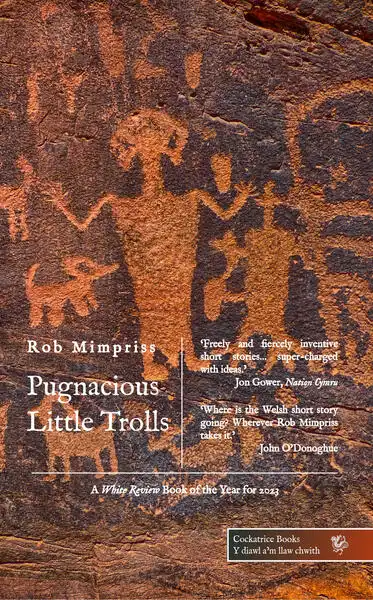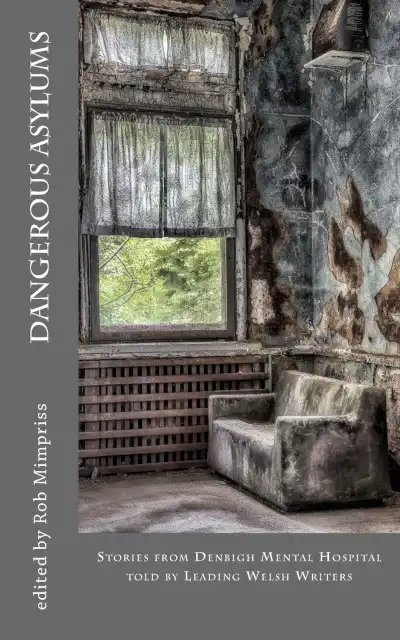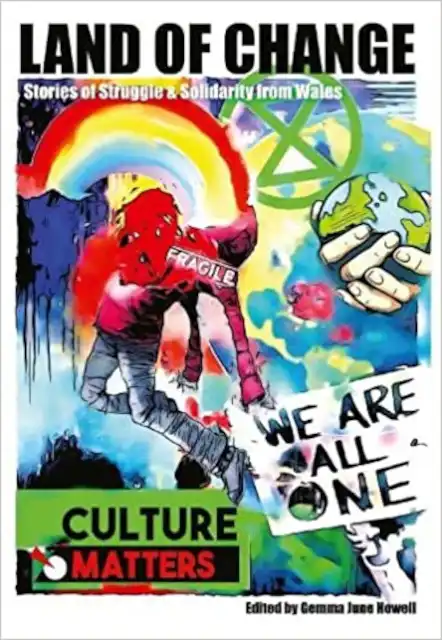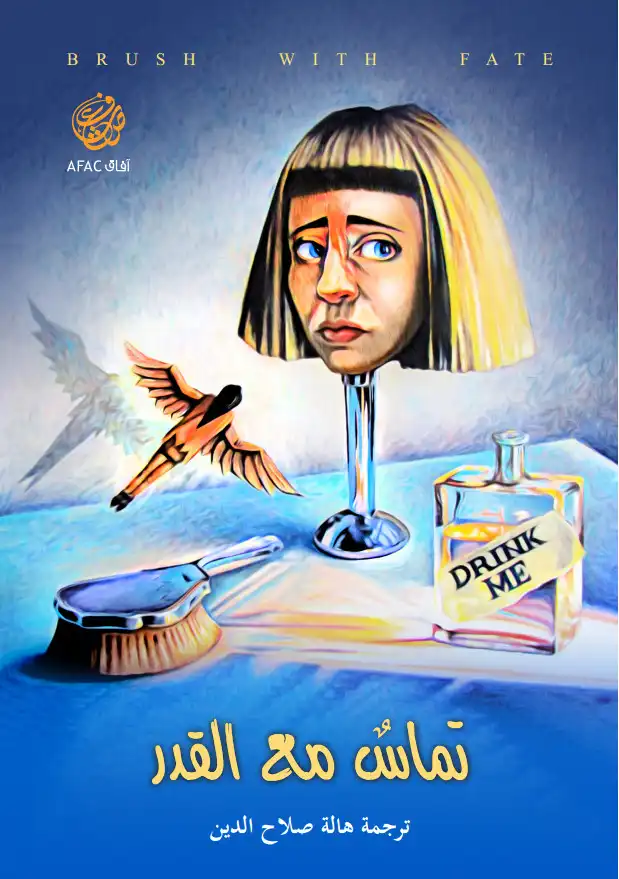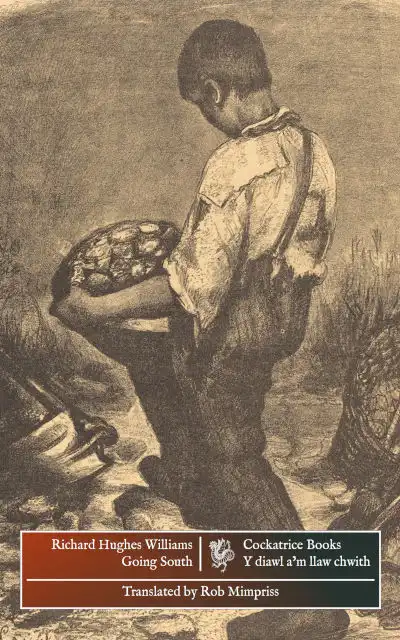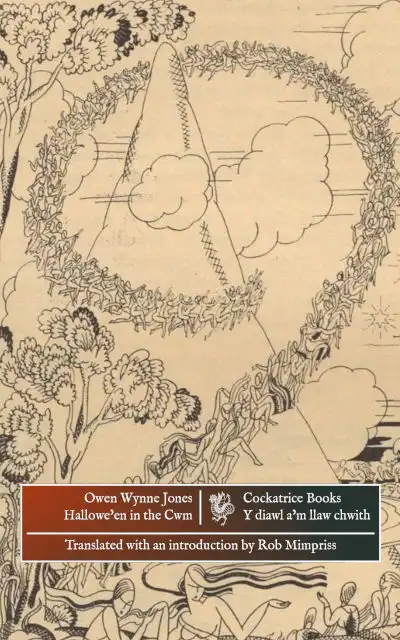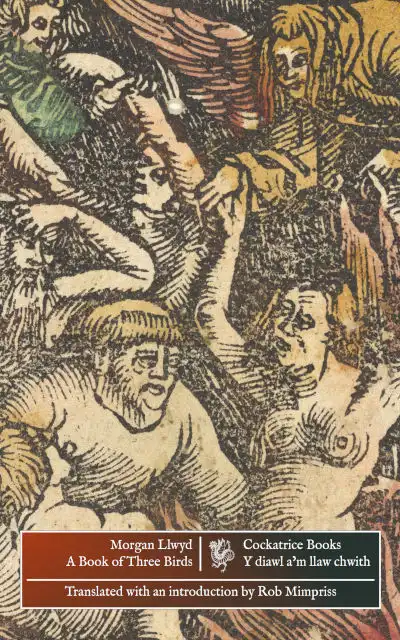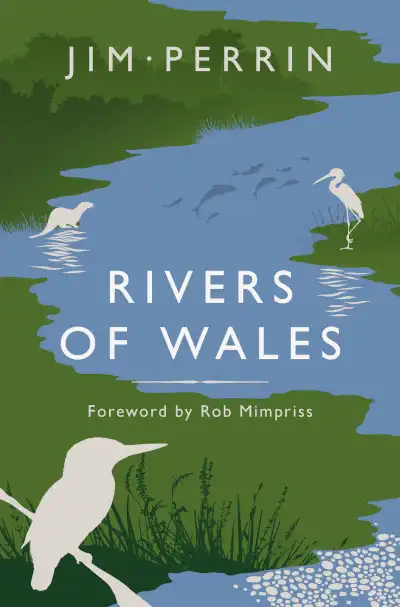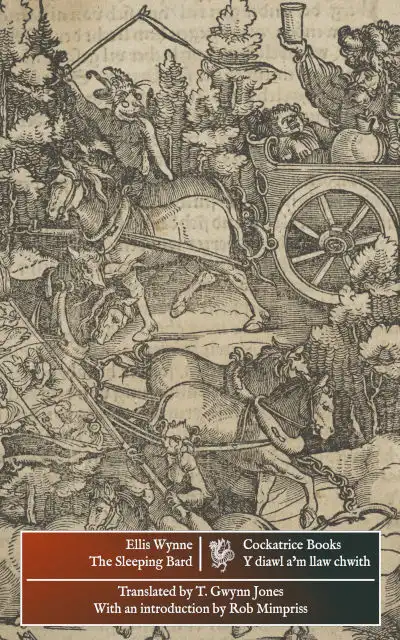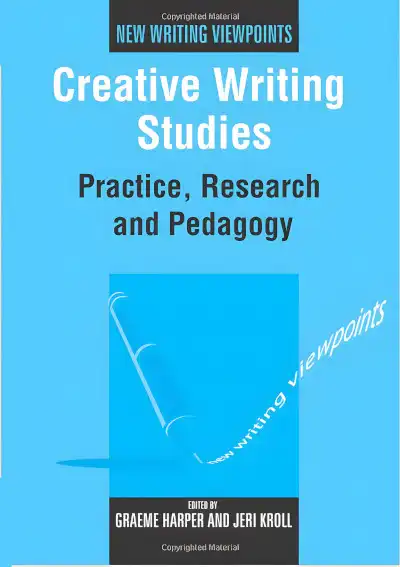Richard Hughes Williams (a.k.a. Dic Tryfan; b. Rhostryfan, Gwynedd, 1878; d. Tregaron, Ceredigion, 1919) was a writer and journalist and an early innovator and populariser of the short story in Welsh. His short stories were published in a range of Welsh magazines and newspapers during his lifetime, and in two volumes of short stories, Straeon y Chwarel (Cwmni y Cyhoeddwyr Cymreig, 1914) and Tair Stori Fer (Hughes a’i Fab, 1916). A collection of his work, Storïau Richard Hughes Williams, was published postumously (Cardiff: Hughes a’i Fab, 1932/1994); while an individual short story, ‘The Wastrel,’ was translated by Dafydd Rowlands as ‘Good-for-Nothing,’ and appears in Alun Richards (ed), The Second Penguin Book of Welsh Short Stories (Harmondsworth: Penguin, 1994).
Anyone seeking to engage with the short stories of Richard Hughes Williams (1878?-1919) encounters a number of difficulties. Comparatively his reputation is swallowed up in the shadow of Kate Roberts, his junior by thirteen years and fellow-parishioner, and readers who might investigate his work on its own merits may be put off by an ambiguous reputation. Meic Stephens, while praising his stories for their ‘economy in narration and dialogue’ as ‘among the best ever written in Welsh,’ must also report their ‘preoccupation with poverty and death’ which strikes many readers as ‘morbid’; and Kate Roberts herself pronounces this same preoccupation as ‘odd.’ While his short stories were repeatedly published in his lifetime, it was not until 1932 that a selected edition was published, which itself remained out of print until 1994. Despite Kate Roberts’s critical essays in 1962 and in 1970, and despite the quickening of interest in his work expressed by Alison Jones, his work remains largely unknown.
The economy with language mentioned by Meic Stephens is immediately noticeable when reading the short stories, and one also becomes aware of the strength of their comedy and pathos. But their preoccupation with poverty and death seems not so much morbid as formulaic, as, a little too often, some quarryman begins the inevitable decline into starvation and disease.
A comparison of some of the stories should make Hughes Williams’s habits plain. ‘Child of the Devil’ begins with a character sketch of a man who works in the quarries. Harri Hook-nose has had a reputation for boisterousness since his childhood, when he broke his nose attempting an experiment in ‘pig-horsemanship’ – an injury which provides his defining feature as a fictional character. It also makes his life difficult in the quarries, where, on his first day, ‘Some praised [his nose], the others composed an englyn to it, and someone even tried to work out with a prick-measure how much it had gone out of line. But Harri had measured him out with a mallet before he’d finished with him.’ This opening character sketch and its content are typical of the stories. Harri the Flea, the protagonist of ‘Pitar,’ is defined in the opening by his relationship with his one-eyed dog who, he claims, grew up in the town, and therefore speaks English fluently, but not Welsh (pp36-37). The hero of ‘Robin Ten O’clock’ is likewise defined by his philosophy of idleness and his habit of arriving late for work every morning, which requires him to be constantly alert for the attentions of the foreman (p29).
After starting work at the quarries, Harri Hook-nose discovers the pleasures of drink, and in this he merits a gentle rebuke from the chapel deacon, Huw Huws. The desire of the quarrymen to give each other help, sometimes spiritual, often practical, is again a recurring theme, and Huws appears repeatedly in this context in ‘The Pale Poet,’ ‘Eb’ and ‘Surviving Sam.’ But the treatment is still humorous at the point, Harri Hook-nose remaining a figure of comedy who can laugh off Huws’s concerns for his well-being. The concise narration and comic dialogue are very typical of Hughes Williams’s method:
‘Harri bach,’ said the old deacon one day, ‘I’m afraid you’ll go down to your grave an alcoholic.’
‘Yes, I’m afraid I will,’ said Harri, wiping his tears on the sleeve of his coat. ‘You’re absolutely right, Huw Huws.’
‘You’ve no one to blame but yourself,’ said the deacon.
‘I suppose I haven’t,’ said Harri.
‘If you gave up that accursed beer, you’d be as good a man as ever put his foot in a shoe.’
‘But what about my nose, Huw Huws?’ (p24.)
Harri Hook-nose ignores Huws’s advice, and returning home drunk from the pub that night, he falls asleep in the snow, regaining consciousness in his bed, where the deacon is with him when he dies. This is not the only death attended by Huw Huws, though tuberculosis and malnutrition are more common causes than hypothermia and alcohol abuse. In ‘The Pale Poet’ the Poet of the title and his friends know that he is dying, and this is the result of his work in the quarry, where ‘his face got thinner every day… his eyes shone less and the cheeks lost their colour.’ He is also coughing blood, and this is much worse after he returns from a week off work to tend and bury his dying mother (pp42-43). A life is lost, and a talent also blighted, for Huws is convinced that the Poet would make an able preacher, and the Poet himself hopes to be famous for his verse, but this hope turns to bitterness as the Poet falls into extreme poverty, and descends towards an early death.
‘Child of the Devil’ and ‘The Pale Poet’ both begin with the eccentricities of the main character and end with his death. But the Poet is initially defined by his outstanding raggedness and poverty, characteristics that prepare us for his end (p41). Robin Ten O’clock, initially described in humorous terms, outwits and triumphs over the foreman to become the oldest worker in the quarry (p29), and Harri the Flea, who amuses Huw Huws by his childish logic and his belief in the extraordinary mental powers of his dog, suffers no worse fate than the loss of it. In ‘Child of the Devil’ comedy becomes tragedy when Harri Hook-nose ignores the deacon’s advice; but while his drinking might be considered a tragic flaw, there is no obvious reason why his broken nose should be so, and the treatment of the final scene is a little puzzling. Harri predicts his death, confesses to spiritual confusion, and asks the deacon to sing a hymn for him. But once again there seems to be comedy at the end, as Huws becomes so carried away with his singing that he fails to notice that Harri has died (pp27-28).
For Kate Roberts, Hughes Williams’s deathbed endings are less a reflection of his view of life than of his uncertainty with the short story form. They are ‘an easy way of finishing, and that is all,’ and Hughes Williams was disadvantaged as a writer since he died before the event-less and open-ended short story of which Katherine Mansfield was a proponent became popular (‘Richard Hughes Williams’ p13). Characterisation in the stories is also ineffective, for ‘Not one of the characters stands out definitely because of his personality, and the reason for that is that they are all passive’ (pp13-14). Kate Roberts also criticises Hughes Williams’s use of dialogue for its repetitiveness and affectation – the trick of a journalist who is paid by the yard (p15) – and the reader will find that scenes involving dialogue are sometimes crudely handled, especially when a large number of characters is involved.
‘The Pagan’ and ‘Old Man’s Will’ are among Hughes Williams’s least successful stories. Robert Huws, the Pagan, is despised at the quarries, regarded as a simpleton because of his lack of Biblical knowledge and as a sinner for his non-attendance at chapel; he prefers to listen to the birds than to the preacher on a Sunday morning, and is an able mimic (Storïau p11). When Huw Huws the deacon speaks out in his favour at the chapel meeting, he finds that he too is a victim of gossip and an outcast; as they discuss their shared exile it transpires that the Pagan has always been willing to attend chapel, but for the gossips which Huws, it seems, has the courage and authority to silence or remove. The story reaches this resolution without action, and with just a few dialogues before the mid-day whistle brings the scene neatly to an end. And although tempted to break his promise to Huw Huws, Robert Huws attends the chapel next Sunday, where he confounds the members by explaining a Bible verse in the light of his ornithological knowledge.
‘Old Man’s Will’ is concerned with another of Hughes Williams’s eccentrics, who is described with great deftness and understated compassion in the opening paragraph of the story. At times the old man ‘would go to the food cabin, and after examining the contents of everybody’s pitcher he would help himself to a mug of white coffee or tea, and sit down on the bench to talk to himself and have a smoke, if he had any tobacco, or take what comfort he could from an empty pipe if he had none.’ At times also he steals food, ‘but no one said an angry word to him, because they knew he got little enough breakfast, and never saw dinner or supper’ (p76).
At this point the quarrymen’s sacks begin disappearing, and since the sacks are essential both as overcoats and as cushions, whoever is responsible for stealing them is liable for chastisement. Two quarrymen overhear the old man talking to himself, castigating himself for the crime, and they follow him in the hope that he will lead them to the sacks. We gather that he has taken them for bedding since he is now sleeping rough at the quarries, but the two quarrymen ‘did not quite understand what the old man had said’ although, as they listen, ‘their faces turned as white as the snow that covered the mountain’ (p78). When he is absent from work the following day, two or three dozen men investigate the matter, and find him frozen to death in his hiding place.
The old man is the focus of interest in the story, driven by hunger to petty theft, and forced from his home by his abusive wife, Beti. He is also in the habit of talking to himself, a habit which is mentioned in the first paragraph, and which later fuels the plot. But the story is told through the viewpoint of two quarrymen whose role in the story is passive and who are themselves poorly differentiated and described.
Two quarrymen investigate the old man’s theft, and two or three dozen investigate his disappearance. Three men actually find his body, among them the Baby and Harri the Flea, recurring characters mentioned in the other stories. So are the Baby and Harri the Flea the two men who followed him the previous day? Where is Huw Huws, who is normally so concerned for the welfare of the quarrymen, and where is Jac Sir Fôn, the old man’s enemy, to whom he has bequeathed his abusive wife (p79)? It seems that the purpose of the story is to contrive the sad end of this eccentric, and to find the other quarrymen complicit in his death. There is a clear division between this individual and the other characters, who are depicted without individual detail and en masse.
The best of the writing is in the first paragraph, and it is noticeable that Hughes Williams’s least successful stories are the ones that fail to fulfil the potential offered in the character sketches that begin them. These stories run into difficulty when they move from the description of character as habit to the depiction of character as specific act, and perhaps this is because Hughes Williams sees his characters as eccentrics, from the outside and without regard to motivation. As Kate Roberts says, the characters are passive, and this itself will account for any lack of tension or purpose in the dialogue.
Hughes Williams’s dialogue seems to come in two modes: that which serves to develop plot, and that which serves to illustrate eccentricity. It seems that the former is less successful, as ‘The Pagan’ and ‘Old Man’s Will’ illustrate; but the comic dialogue is much stronger, capable in its own right of carrying a short story. For example, ‘Y Sgolar’ describes the adventures of a newcomer to the quarries, in this scene introducing himself to an old hand, Robin Ifan:
‘Well, mate,’ he [Robin Ifan] said, ‘what’s your name?’
‘Arthur Obadiah Huw Jones.’
‘Yr achgwd fawr, you’re gentry! Is there anymore?’
‘Yes, two letters.’
‘What are they?’
‘B.A.’
‘Are you a minister, then? Diagan i, Huws is a lying old so-and-so.’
‘Why, what did he say?’
‘He said you’re a soldier.’
‘Well, I’m a soldier too.’
‘Have you been in any battles?’
‘Yes, hundreds.’
‘Were you at Waterloo?’
‘Yes, I just got back from there last week.’
‘How was old Bony?’
‘Oh, he was in good form. No, I forget, he had a touch of tooth-ache.’ (p99.)
The dialogue serves no narrative purpose, and the function of the story itself is to bring these characters together so that we can enjoy their banter. It may, as Kate Roberts says, be a journalist’s trick, and it displays some of the repetitiveness that she finds pointless, but this need not stop the reader enjoying the fun, and in any case there is also more to Hughes Williams’s dialogue than this. In ‘Going South’, one of his most successful stories, the repetitiveness has a justification since one of the quarrymen is deaf; the painful slowness with which he absorbs the information that his son, Jim, is abandoning him to work in the coalmines in the south of Wales, reflects the painful gravity of Jim’s decision (pp56-57).
The three abiding themes in Hughes Williams’s work are solidarity, individuality and fate, and the way these themes interact gives the stories their distinctive character. Fate is represented by the impersonal forces of poverty and disease, and it is the foolish, the elderly and the weak who are most at risk: Harri Hook-nose in ‘Child of the Devil,’ Old Ben in ‘Going South’ and the Poet in ‘The Pale Poet.’ The weak must be given the help of the strong if the strong are to maintain their honour, and it is the compassion for their colleagues shown by Huws and other characters that Hughes Williams celebrates.
But the system has its shortcomings. The inevitable slide of the eccentric individual towards tuberculosis gives the impression of diminishing authorial creativity, and stories which begin with briskness and wit must end in anticlimax. Meanwhile, as in ‘Old Man’s Will,’ the witnesses of fate have an uncertain rôle. In ‘Evening’s Rest’ the narrator is only a boy when the old man Siôn Ifan is fired from the quarry. He follows him home, listening to his anxious mutterings, and unseen because Siôn Ifan ‘wasn’t looking behind him. Perhaps he didn’t want to look back at the place that had sucked his blood and abandoned him to die now he had no more blood to offer’ (p80). Eavesdropping at the window, the boy listens while Siôn Ifan and his wife Margiad prepare to leave for the workhouse, and sees him two days later, after Margiad’s death, talking wildly about shooting the foreman. But as a physical presence in the story the boy comes and goes. When Siôn Ifan and Margiad set out, the prose implies a more impersonal viewpoint, and at the end also an inquest is described which a boy might not attend, and conclusions drawn on its proceedings which a boy might not be able to reach (pp83-84). But if the deaths of Siôn and Margiad are inevitable from the point when the story begins, then of course the boy’s presence will at times be unnecessary, and the lapse of understanding suffered by the two quarrymen in ‘Old Man’s Will’ is also an authorial contrivance.
The stories of Richard Hughes Williams oppose a male society united by conscience against the opposition of fate; in the stories of Maxim Gorky society is united or divided by individual greed and fear. ‘Chelkash’ describes the relationship between the aged, hawkish plunderer of the merchant fleets on the Black Sea, and Gavrila, the naïve young peasant he envies and despises. Corrupted with drink, and deceived and intimidated into helping Chelkash with a robbery, Gavrila discovers his own love of money and his willingness to beg Chelkash or kill him for the 540 roubles that a night’s work obtains. The prostitutes in ‘Red’ hold their pimp in such fear that they will bind and gag their own comrades in readiness for his beatings; but when he is lamed in an accident they unite against him.
When his characters compete only with fate and nature and cooperate with each other, Hughes Williams forgoes a source of drama and conflict, but elsewhere his characters’ interactions acquire tension and purpose. The dying Poet in ‘The Pale Poet’ is offered shelter and nursing by Huw Huws, but refuses it because ‘it wouldn’t be fair for me to come home with you today, and for you to end up paying for my funeral tomorrow’ (p44). Huw Huws denies that the Poet is dying, an argument which the Poet handles with all the ruthless logic of a chapel minister (p45). Solidarity and individuality also combine when the quarrymen kind-heartedly deceive one another. In ‘Surviving Sam,’ for example, Huws assures a young boy dying of tuberculosis that people as ill as he is and worse have recovered, and turns to the viewpoint character for corroboration (pp74-75). When Jim dies in a mining accident in ‘Going South’ the other quarrymen keep this knowledge from his father, Old Ben, by sending forged letters on the dead boy’s behalf. At such moments the individuality of the characters is discovered in the gap between what they know, what they perceive others to know, and what they are willing to say, and the dialogue shows the variety of their perspectives and motives.
At times also fate becomes a more assertive presence in the stories than the slow advance of disease and death, and a more vital link is forged between the individuality of the quarryman and the end he suffers. The hero of ‘Eb,’ a young apprentice in the quarries, runs errands and offers services for various quarrymen, but receives almost nothing in the form of useable slate in return. As the story moves from character sketch into narrative, he stands ‘with a childish smile on his innocent face’ while Huw Huws discusses his situation with a character mentioned in ‘Old Man’s Will,’ the Baby (pp61-62).
Huw Huws sets the boy to work for the Baby, and as Eb matures into a ‘strong young man’ he carries on working with him as a partner, turning down the offer of better wages elsewhere (p64). The loyalty he has shown as a child, running errands for quarrymen who merely exploit him, is the same loyalty he now shows his friend in adulthood.
It also this that secures his death. Eb and the Baby are digging their way back to a surface lost in a rock-fall, when the slag-pile above them starts moving and the Baby’s foot is caught between rocks as a boulder starts bearing down on him. Eb places himself in the boulder’s path even as the Baby shouts at him to get out of the way, and the boulder is described in more than natural terms: ‘What is the strength of a man against a boulder weighing two tonnes? The next minute, the boulder was sliding slowly over Eb’s dead body, slower than before, as though to avenge itself to the utmost on one creature for daring to save another from its claws’ (p65). Individuality, solidarity and fate have come together in this story. The boy’s death is a fulfilment of his individuality opposed by fate, and an expression of the altruism which in this story is mutual. In terms of tragic structure it is one of Hughes Williams’s best.
This uniting of themes is also achieved in ‘The Wastrel’. Harri, the ‘bad lad’ of the title, has a reputation for drunkenness and, no doubt, godlessness, but this opinion of him is tested and found wanting when he and his young assistant, Dic, are trapped by a rock-fall in the very bottom level of the quarry. Harri decides that Dic shall live, catching and killing the rats that infest the cave, and secretly forgoing his own share of their rations. When the rescuers finally reach the cave, they think it strange, first ‘that he should have died before Dic bach,’ and second ‘that the greatest of sinners should have given his life for another’ – only realising, when the drinking is forgotten, ‘that it was just like Harri’ (p95).
In terms of technique, ‘The Wastrel’ stands apart from the other stories. It begins with no character sketch, but with immediate action that reveals personality as Harri comes to with a hangover in the bottom level of the quarry, and Dic arrives for work singing cheerfully (p89). The story is limited to the time and space of the pair’s confinement, and so Harri finds himself solely responsible for ensuring the boy’s welfare and maintaining his hopes – a more dramatic situation than one in which care for the weak is entrusted to two or three or two or three dozen. The scene where he and Dic try to shift the rock that traps them unites solidarity, individuality and fate in a single image, as once again the social interactions acquire tension from the differing perspectives of the characters, and Harri tries to keep from Dic the seriousness of their situation. The story combines dry humour with gentle pathos, almost entirely without sentiment. Harri’s courage and good humour are made more moving by his initial lack of self-belief, when he castigates himself as ‘a wastrel’ and accepts Dic’s judgement that he is ‘worse than a pig’ (p89). Dic’s character is also nicely conveyed. Harri’s inventory of his packed lunch, ‘Six pitchers of bread and butter, a huge chunk of cheese, and an egg,’ not only defines him as ‘a big eater’ (p91) but suggests what is also shown in his endless questions, hopes and fears – that he is a boy still hungry for life.
The stories can be classified as those which rely on dialogue for purely comic effects, as those which describe the fate of some eccentric from the viewpoint of another character or characters, and as those one or two which describe the heroism of workers in the quarries. Although Hughes Williams’s own generation saw similarities with Maxim Gorky a more revealing comparison might be made with Bret Harte, for he too wrote about male societies united in hardship, and he too sought a mixture of realism, pathos and comedy in his work. In ‘Tennessee’s Partner’ the same crowd who have watched the hanging, as a highwayman, of a man called Tennessee, are invited to attend his burial by Tennessee’s one close friend: ‘The men – half curiously, half jestingly, but all good-humouredly – strolled along beside the cart: some in advance, some a little in the rear of the homely catafalque.’[^7] The eccentricity of Tennessee and his friend, the negotiated solidarity of the men, and the rural simplicity of the funeral, are identifiable also as part of Hughes Williams’s world, and one feels that the quality of the writing is similar.
A moving tribute to Hughes Williams as a man and to his genius as a writer is contained in an essay by E Morgan Humphreys (introduction to Storïau Richard Hughes Williams). He describes the degree of compression of the short stories, the gift of a dramatist, his willingness to reproduce the everyday speech of quarry workers, his observer's standpoint, and the insight that detects the willingness of the down-trodden to make a drama of their oppression. I have been reading the short stories for over ten years, and still find myself going back to them. Their vividness is unforgettable.

